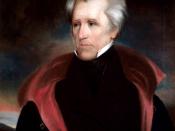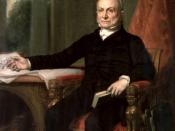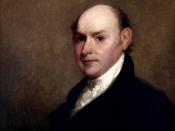Many of the emerging sectional conflicts of this time began to manifest themselves during the presidency of Andrew Jackson and in the domestic policies he had put in place.
One of the most obvious conflicts was the division between the northern and southern states. This was evident in Jackson himself and in his government policies. Jackson supported the southern states and their ideas, which was obvious in his supporters, who were mainly southerners or westerners. Also his main opposition came from northerners or those who supported northern ideas. Furthermore his everlasting desire to destroy the National Bank was mat with opposition from mainly the northern politicians. He believed that they should continue to push westward into new lands, an idea supported mainly by the southerners and the northerners supported it very little.
Another emerging conflict was that between the state and federal government and what powers each of them had.
This started mainly in the south with the "nullification crisis." The idea of nullification was that states could veto a federal decision such as a tariff or treaty if they didn't approve of it or want to abide by it. It started when John Quincy Adams passed what South Carolina called the Tariff of Abominations just before he left office. South Carolina hated it because they said it was ruining their economy as well as that of all the southern states. Jackson believed that nullification was treason. (Brinkley, p. 243) He fought John C. Calhoun over whether or not it should be allowed and eventually put it down and ended it. He believed that the good of the Union had to come before the good of the states. However Jackson later supported the state over the federal government when he had the National Bank destroyed. This left it up to...


